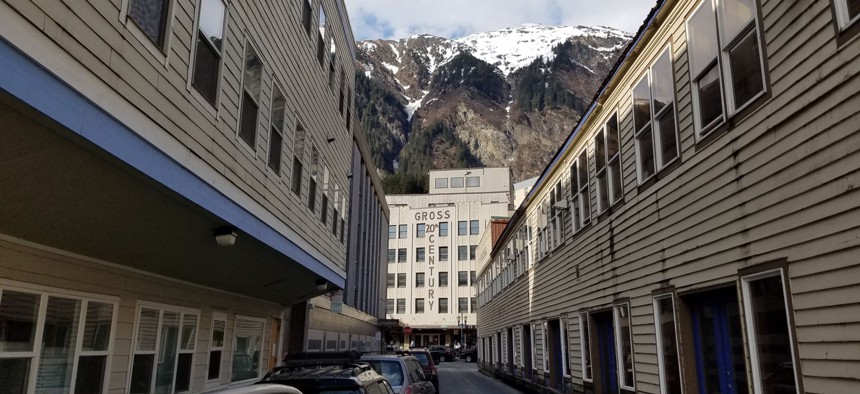Managing Risk in the U.S. City Facing the Most Danger From Urban Avalanches

Downtown Juneau sits at the foot of Mount Juneau. Michael Grass / Route Fifty

Connecting state and local government leaders
If the conditions are right, snow and ice can rip a path of destruction in Juneau, Alaska. This spring, Route Fifty explored an avalanche that came down Mount Juneau, which could have hit a neighborhood if circumstances were different.
This article is an excerpt of an ongoing series of dispatches that's part of a larger forthcoming ebook providing snapshots of the very real dangers and disruptions that emergency planners, first responders, public officials and other stakeholders face, plus the strategies and technologies helping our communities be more resilient. | Check out the rest of Route Fifty's explorations of Alaska in "The Geography of Disaster Risk and Resiliency in America."
JUNEAU, Alaska — In late March, the Last Frontier’s remote and isolated capital city briefly made national headlines thanks to a dramatic cellphone video that captured an early morning avalanche in progress.
But the large mass of snow and ice wasn’t tumbling down a steep slope in some remote and rugged backcountry. It hit the fringes of Juneau’s population center, about a 10-minute walk from the State Capitol.
Fortunately, the avalanche that came down from Mount Juneau, which reaches an elevation of nearly 3,600 feet above sea level, missed hitting any homes. But it came close.

I saw this first hand about two weeks after the avalanche, with a local resident who lives near the end of Coleman Street and showed me around while walking her dogs.
After hiking up a short trail from the dead-end street, there it was, a dirty, icy mass blocking the path, which is used by mountain bikers and neighborhood residents alike.
The avalanche’s sloping remains had decreased in size since it had come down the mountain, but it was about as high as a one-story house. The avalanche video, which features a white cloudy cascade of powder, might suggest a somewhat benign force of nature.
But traversing the avalanche’s remains, the reality isn’t anything to scoff at—it was mostly cragged hard-packed ice, covered in dirt, rocks, uprooted trees and destroyed vegetation that had been carried down the slope.

Juneau escaped a potentially tragic incident that early spring day, but it could have been deadly if the circumstances had been different.
Continue reading this dispatch at "The Geography of Disaster Risk and Resiliency in America: Alaska"
Michael Grass is Executive Editor of Government Executive's Route Fifty and is based in Seattle.

NEXT STORY: New Poll: Vast Majority of Americans Support Continued Funding for Medicaid Expansion





